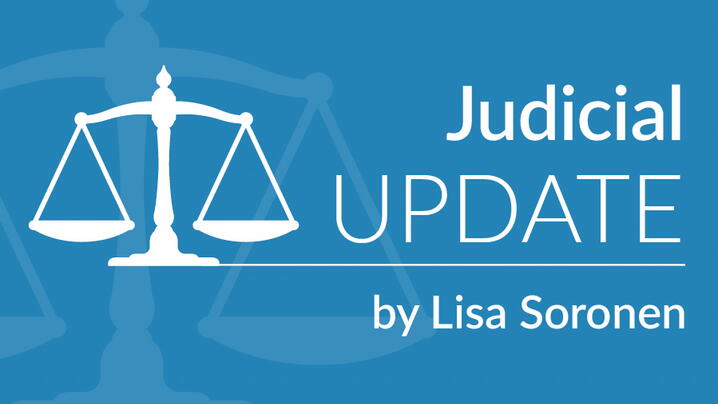
by Lisa Soronen, executive director, State and Local Legal Center
The Supreme Court has accepted a second partisan gerrymandering case to be decided this term. The first case, Gill v. Whitford, may be more relevant to local governments as it involves state legislative redistricting; Benisek v. Lamone involves congressional redistricting. Beyond these specifics, both cases raise the same question on whether and when partisan gerrymandering is unconstitutional. (The definition of gerrymandering is that it can establish a political advantage for a particular party or group by manipulating district boundaries.)
In Benisek v. Lamone in 2011, the Maryland legislature needed to move some 10,000 voters out of the Sixth Congressional District to comply with “one-person-one-vote” and the rule that, under the Equal Protection Clause of the Constitution, legislative voting districts must be the same in population size. It moved about 360,000 Marylanders out of the district and about 350,000 Marylanders in the district. As a result, only 34 percent of voters were registered Republican versus 47 percent before the redistricting.
Following the redistricting, Representative John Delaney (D-Maryland 6th District) defeated the incumbent Republican by almost 21 percent. But two years later in 2014, Delaney almost lost his seat even though his challenger didn’t live in the district and raised less money. Two years after that, Republican Larry Hogan won the Sixth District and beat his rival by 14 percent.
A number of Sixth District Republicans sued, alleging the state legislature “targeted them for vote dilution because of their past support for Republican candidates for public office, violating the First Amendment retaliation doctrine.”
In 2016, two judges on a three-judge panel articulated a standard for when partisan gerrymandering violates the First Amendment. Challengers to the plan must show (1) the legislature redrew the district lines with the specific intent to burden voters of a particular party; (2) the targeted voters suffered a “tangible, concrete burden” on their representation rights; and (3) the legislature’s intent was the “but-for” causation of the concrete effect.
In a 2017 ruling applying the above standard, two judges on the three-judge panel weren’t convinced that the challengers were able to demonstrate that cause-in-fact meant the partisan gerrymander Republicans would have won and continued winning in the Sixth District.
The court said it was “not yet persuaded that it was the gerrymander (versus a host of forces present in every election) that flipped the Sixth District and, more importantly, that will continue to control the electoral outcomes in that district. Voter decisions are mutable and subject to change, despite voting history and party affiliation. As discussed below, the razors-edge Sixth District race in 2014 is evidence that suggests significant party-crossover voting and calls into doubt whether the state-engineered an effective gerrymander.”
A dissenting judge described the majority’s opinion as resting on a “bizarre notion of causation that requires the exclusion of all possible alternative explanations, however remote and speculative.” “This First Amendment test focuses on the motive for manipulating district lines, and the effect the manipulation has on voters, not on the result of the vote.” This judge concluded, “the record could not be clearer that the mapmakers specifically intended to dilute the effectiveness of Republican voters in the Sixth Congressional District and that the actual dilution that they accomplished was caused by their intent.”
Before deciding whether the three-judge panel in this case correctly applied the test it laid out for partisan gerrymandering that violates the First Amendment, the Supreme Court must decide whether partisan gerrymandering claims can even be brought under the First Amendment and if so, what is the proper standard to evaluate them.
Earlier in the term, the Supreme Court heard oral argument in Gill v. Whitford, which also raises the question about whether and when partisan gerrymandering claims are justiciable and subject to trial in a court of law. The cases are similar but not identical. Gill v. Whitford involves a statewide equal protection and first amendment challenge to state legislative redistricting based on, among other factors, the efficiency-gap, which measures “wasted votes”—votes cast in each district for a non-winning party’s candidate. Benisek v. Lamone involves a single-district challenge to a congressional district based solely on First Amendment retaliation.
New, Reduced Membership Dues
A new, reduced dues rate is available for CAOs/ACAOs, along with additional discounts for those in smaller communities, has been implemented. Learn more and be sure to join or renew today!
